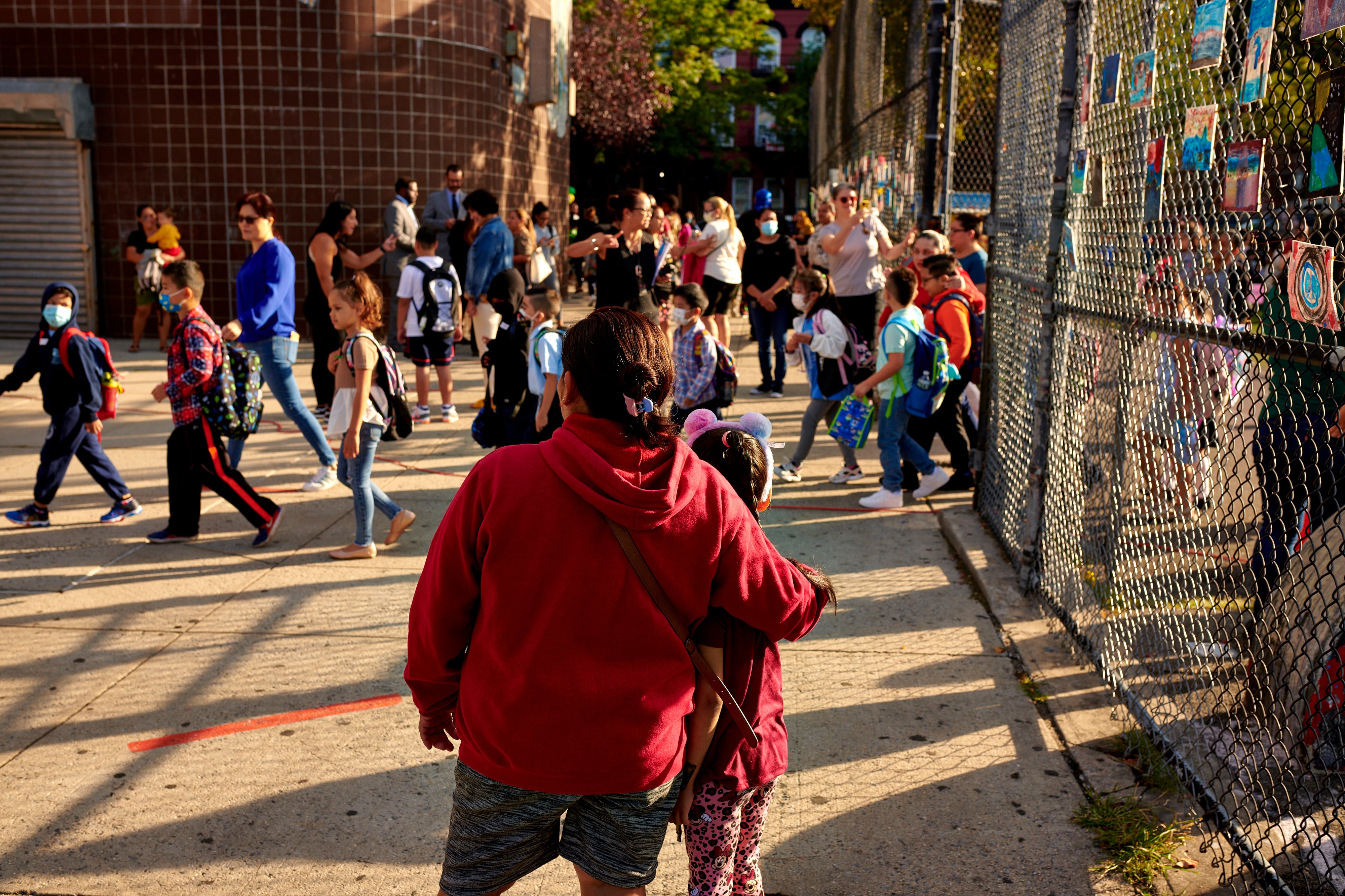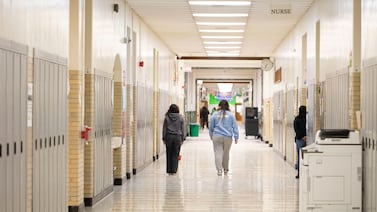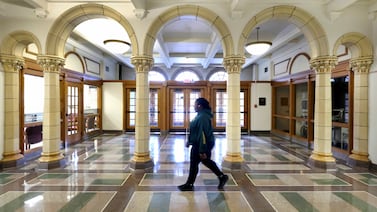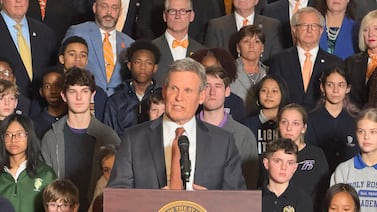Sign up for Chalkbeat New York’s free daily newsletter to keep up with NYC’s public schools.
New York City’s Education Department will cut nearly $550 million from its budget this year as part of a sweeping round of citywide reductions ordered by Mayor Eric Adams.
Many of the cuts are expected to take effect immediately. They will touch a wide range of programs and positions that directly affect students, from the city’s massive free preschool program, to community schools that support families with out-of-school needs, to the popular pandemic-era Summer Rising program.
A big chunk of this year’s savings will come through a hiring slowdown and the elimination of 432 vacant non-classroom positions, which officials said on Thursday will lead to a combined $157 million in savings.
Budget officials didn’t specify which roles would be eliminated but emphasized cuts to central offices and other roles that support schools. A hiring freeze has been in place since earlier this fall, but has not applied to teaching positions. Education Department officials didn’t immediately say whether the agency would continue to spare teaching positions from the freeze.
A mandate to rein in spending on “supplemental pay for administrative staff” is expected to save another $86 million this year, but officials didn’t immediately provide details on what that means.
In September, Adams directed all city agencies to find cuts equal to at least 5% of the city’s contribution to their annual budgets by November, in response to what he described as unsustainable levels of spending on the ongoing influx of asylum seekers. Additional cuts of 5% are expected in January and again in spring 2024.
In all, that means the Education Department could face up to $2.1 billion in cuts. The department’s overall budget is roughly $37.5 billion this school year.
Starting next fiscal year, the department will cut $120 million from the Universal Pre-K program, which enrolled about 100,000 3- and 4-year-old this year and is the signature legacy of former Mayor Bill de Blasio’s administration. The program has been beset by payment delays to child care operators and enrollment declines during the pandemic.
Officials said they’re reducing the size of the program because there are about 37,000 vacant seats, but did not specify how many of those slots they plan to eliminate.
“While we don’t know many details yet, there is no way a cut this large would not hurt the services available to children and families,” said Gregory Brender, the chief of policy and innovation at the Day Care Council of New York, a membership organization of child care providers.
A range of longstanding programs with a direct presence in schools are also facing small cuts.
An initiative to expand the teaching of computer science is losing $3.5 million this year, while the budget for community schools will be cut by $10 million this year. Community schools were another major educational priority of de Blasio’s administration, and have continued to grow under Adams.
Separately, nearly $20 million in funding for Summer Rising, the pandemic-era free summer school program that served roughly 110,000 students last year, is being slashed from the budget of the city’s Youth and Community Development Department, which jointly operates the program with the Education Department. The cuts will mean reduced hours and no Friday programs for some middle-schoolers, officials said.
The program has proved immensely popular with families and had about 45,000 more applicants than slots last year.
“For months, we have warned New Yorkers about the challenging fiscal situation our city faces,” Adams said in a Thursday statement. “To balance the budget as the law requires, every city agency dug into their own budget to find savings, with minimal disruption to services. And while we pulled it off this time, make no mistake: Migrant costs are going up, tax revenue growth is slowing, and COVID stimulus funding is drying up.”
Budget analysts have pointed out that the cuts ordered by Adams are far greater than the expected costs of serving the asylum seekers. The city also collected nearly $8 billion more in revenue last fiscal year than anticipated, according to a recent analysis from Comptroller Brad Lander.
Michael Mulgrew, the president of the United Federation of Teachers, called the cuts “unnecessary” and “driven by City Hall’s false political narrative that New York City is about to fall off a fiscal cliff.”
“Revenues are higher than expected, investment from Albany is up, and reserves are at a near-record high,” he added.
Other groups warned that the city’s hiring and budget freeze is already affecting services for vulnerable children, and that further cuts could threaten their legal rights.
Advocates for Children, a nonprofit group, said the city has been unable to hire 15 additional staffers to help families living in shelters navigate the education system, an urgent concern given the influx of migrant families.
The organization also said short staffing appeared to be causing delays in providing preschool special education evaluations and services in the Bronx.
“We are particularly concerned that these budget plans will result in even more egregious violations of the rights of students with disabilities, English Language Learners, and students in temporary housing or foster care,” Advocates for Children executive director Kim Sweet said in a statement.
More cuts ahead for NYC schools
The city-directed budget cuts are part of a perfect storm of fiscal trouble facing city schools.
About $7.7 billion in one-time pandemic aid from the federal government has padded the Education Department’s budget in recent years and funded critical initiatives, including expanded preschool and summer enrichment programs. That money will dry up next September, and the looming expiration of that aid has already prompted some painful cuts.
For the first time in four years, the Education Department clawed back money this week from schools where enrollment numbers fell short of projections.
Because enrollment went up overall across the city, the majority of schools didn’t have to return money, and instead got extra funding because of higher-than projected enrollment. But there were still more than 650 schools that saw a total of $109 million in midyear cuts, according to a United Federation of Teachers analysis.
Michael Elsen-Rooney is a reporter for Chalkbeat New York, covering NYC public schools. Contact Michael at melsen-rooney@chalkbeat.org.
Alex Zimmerman is a reporter for Chalkbeat New York, covering NYC public schools. Contact Alex at azimmerman@chalkbeat.org.






